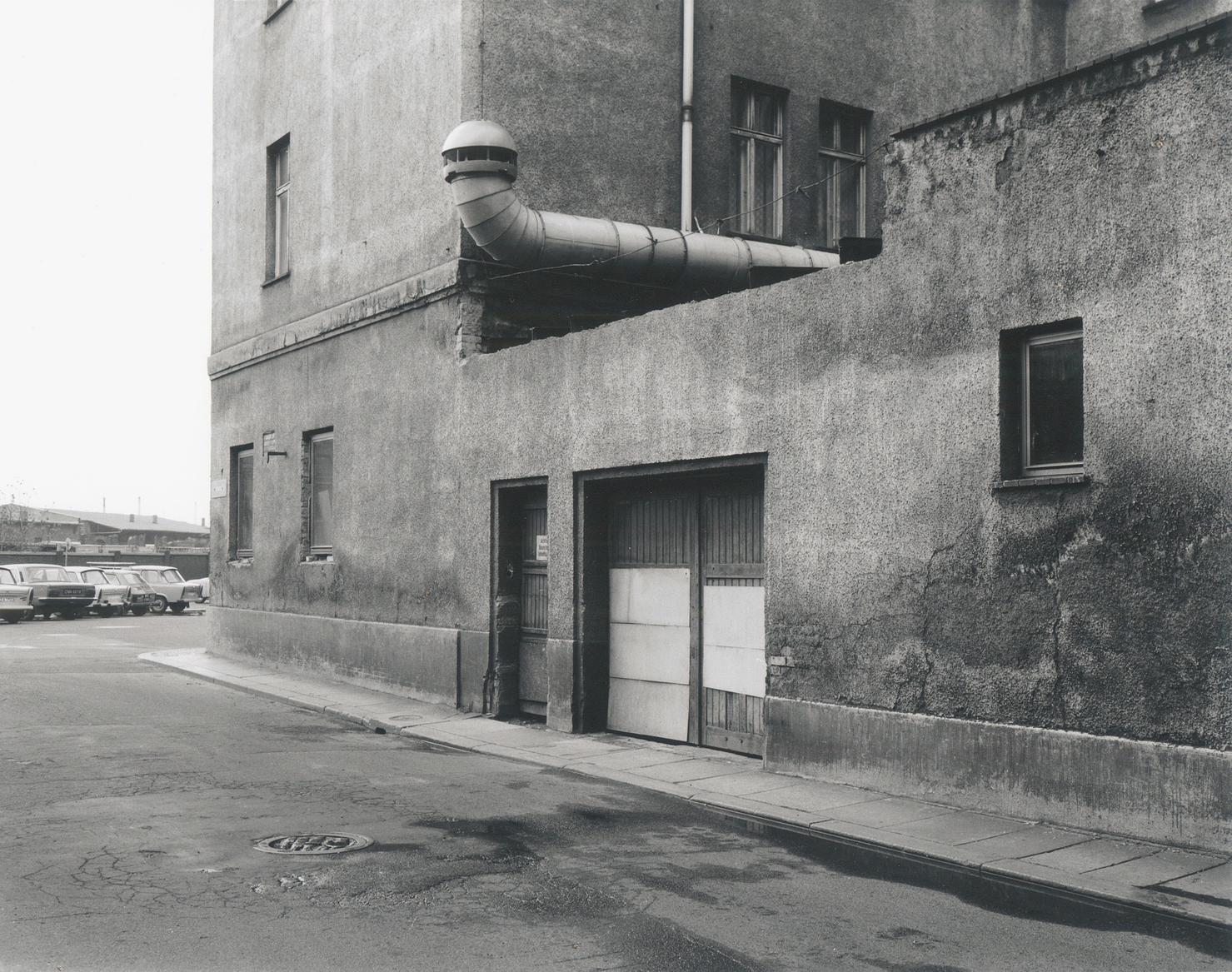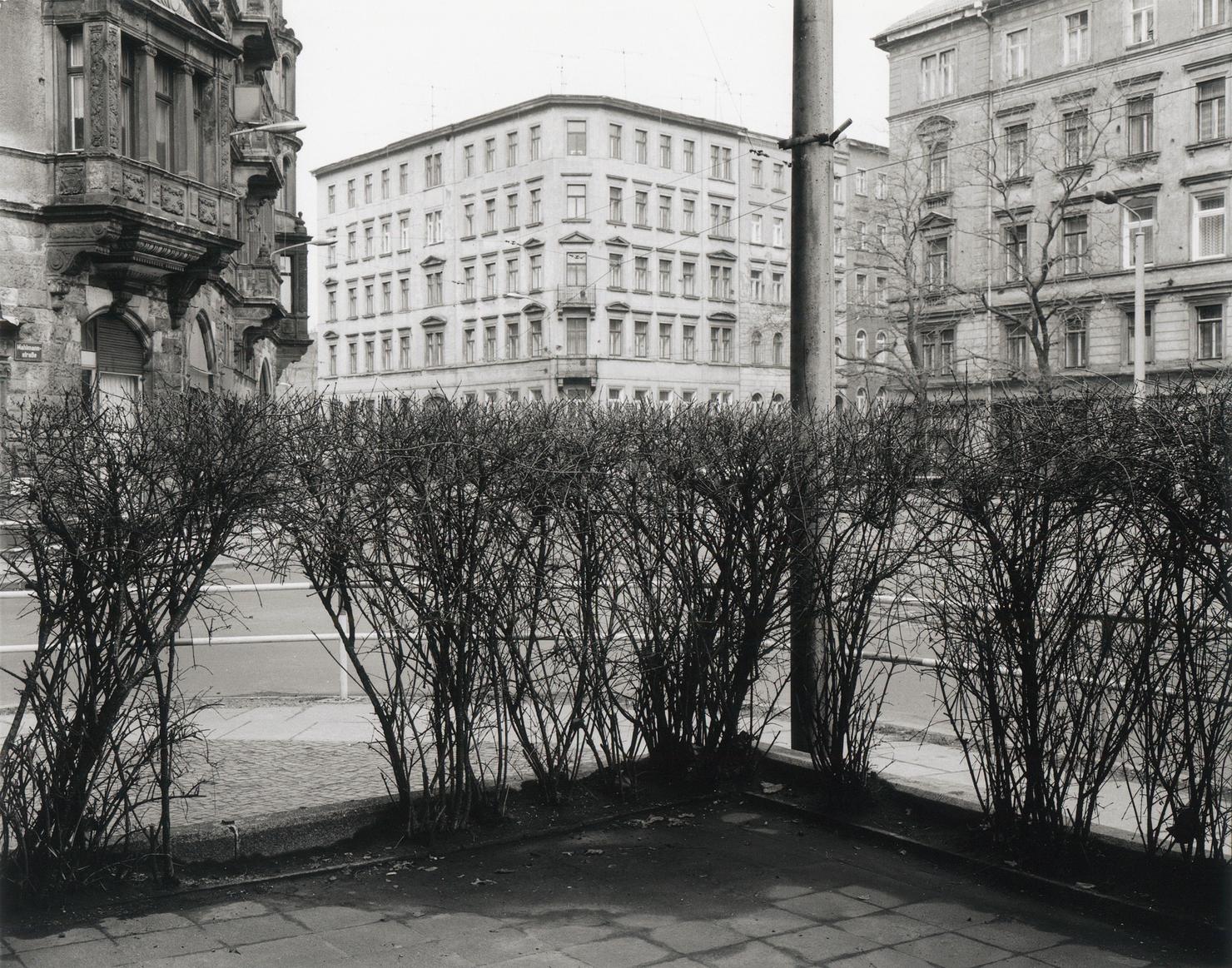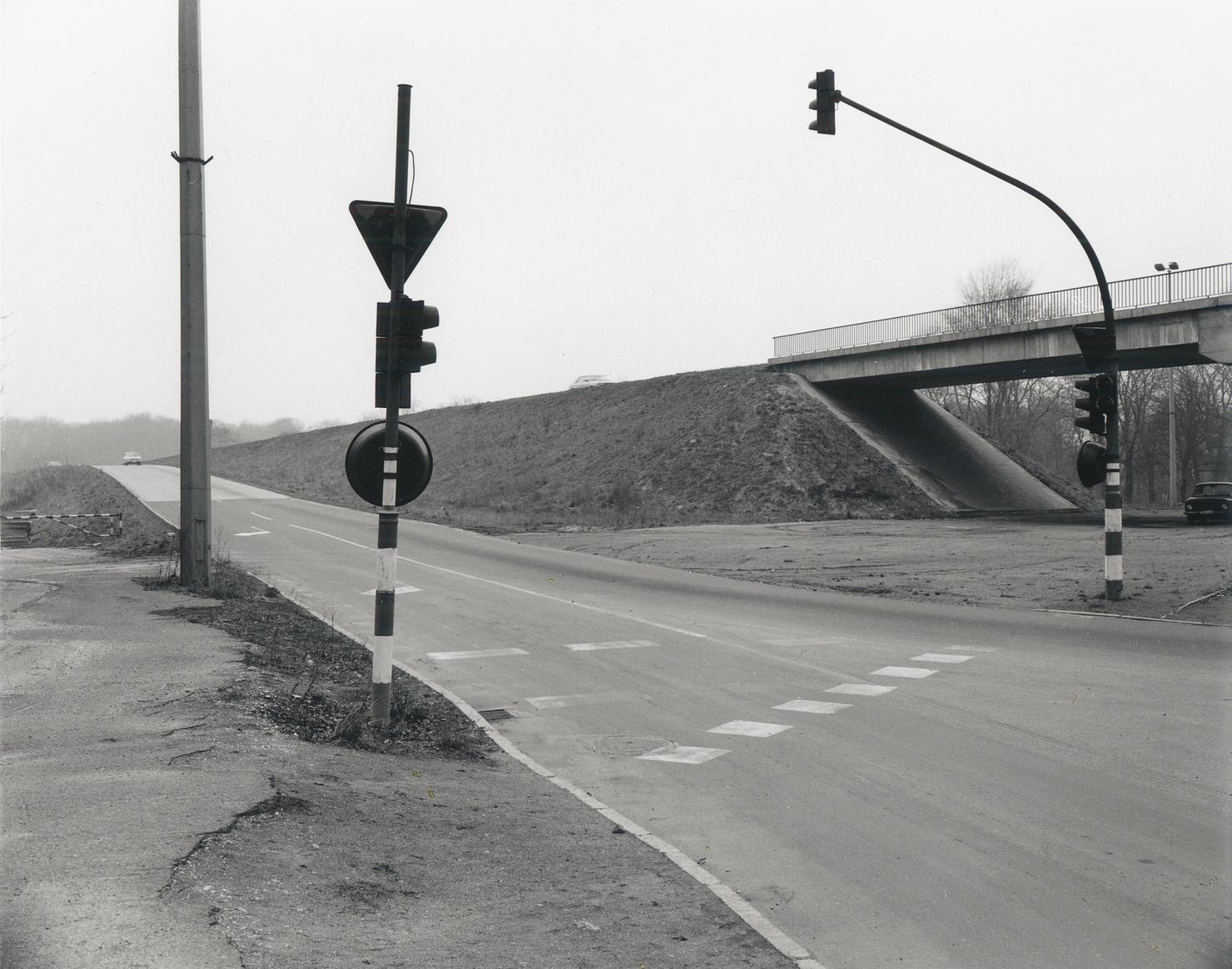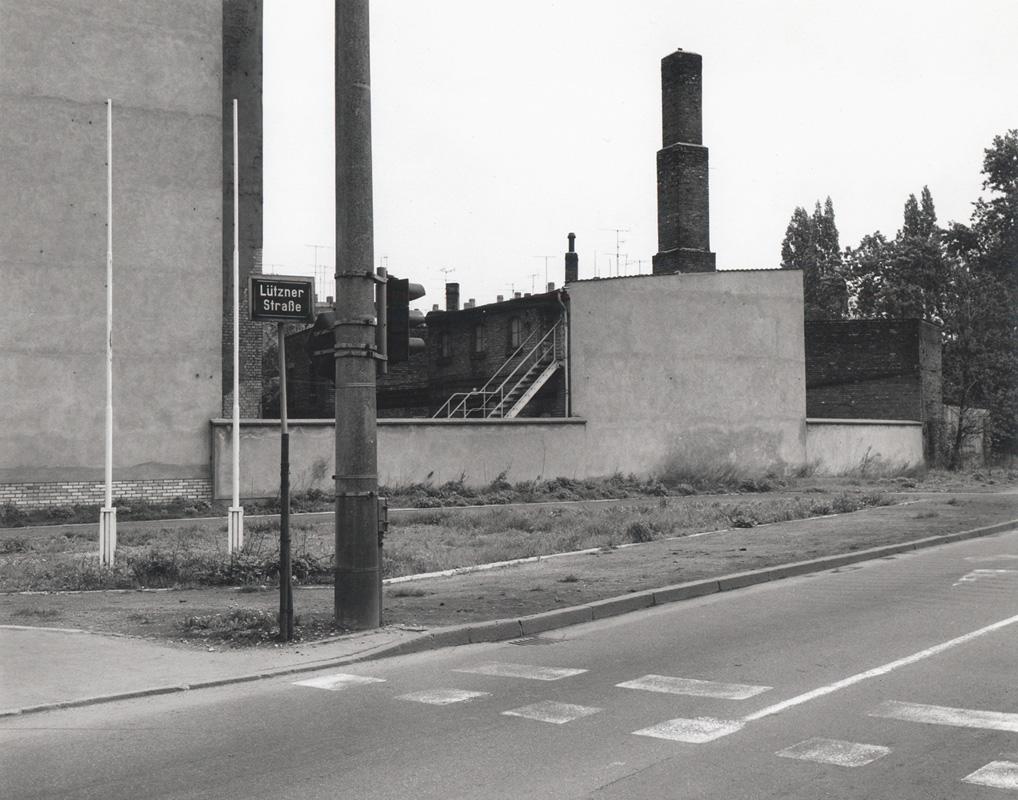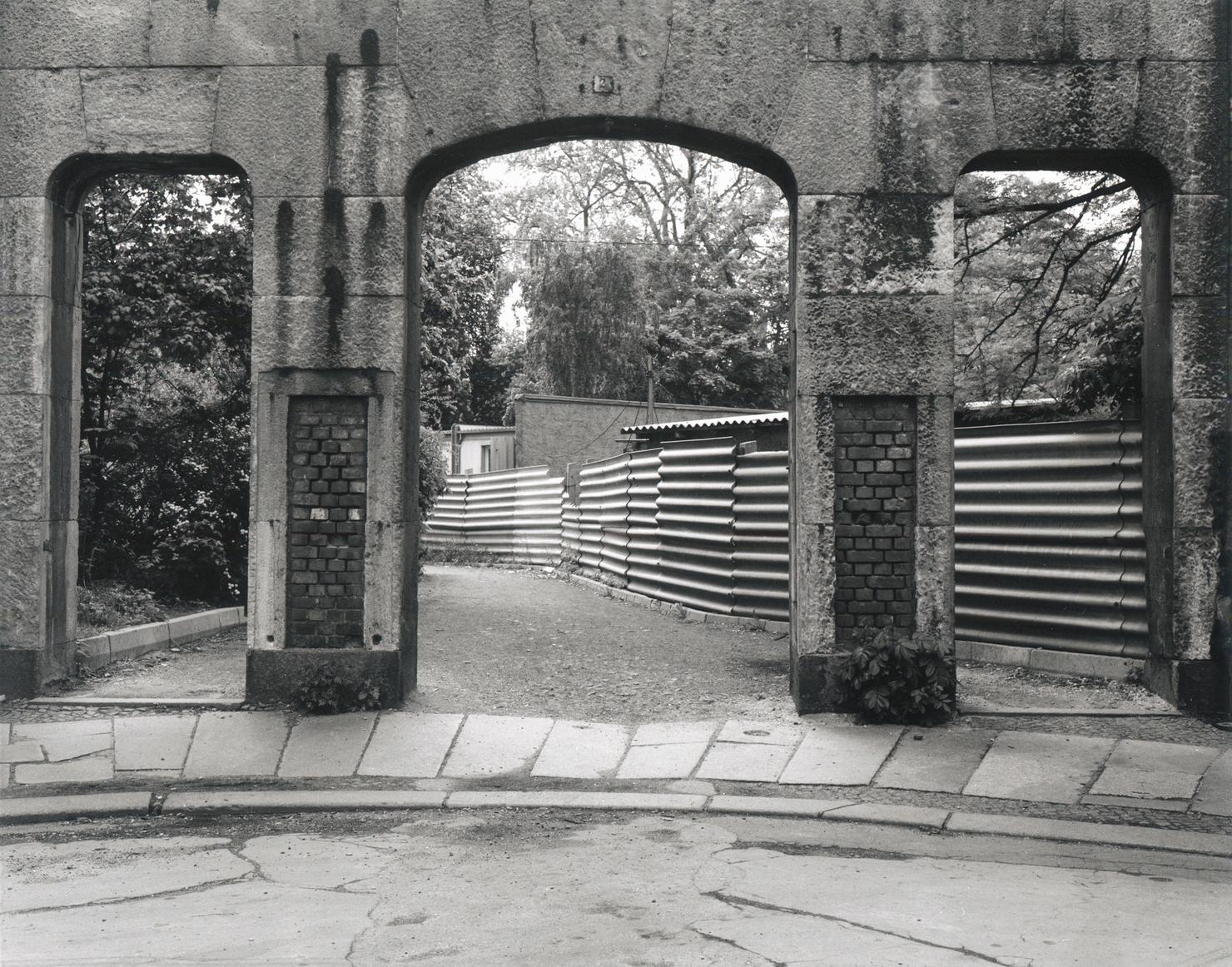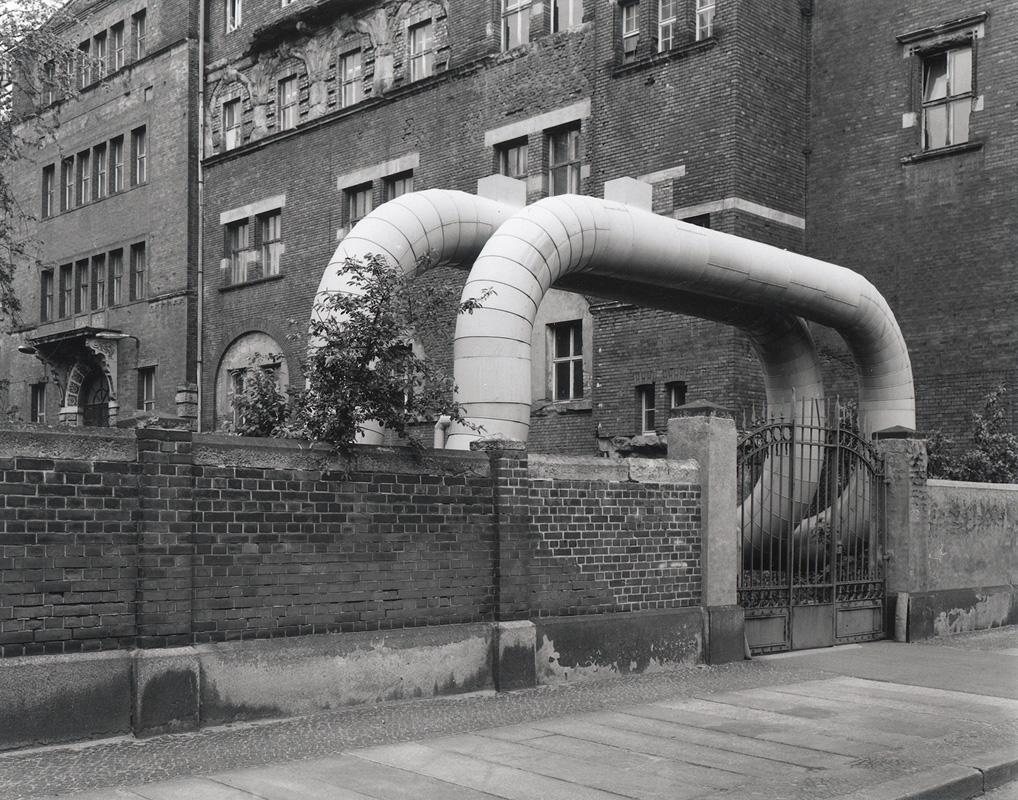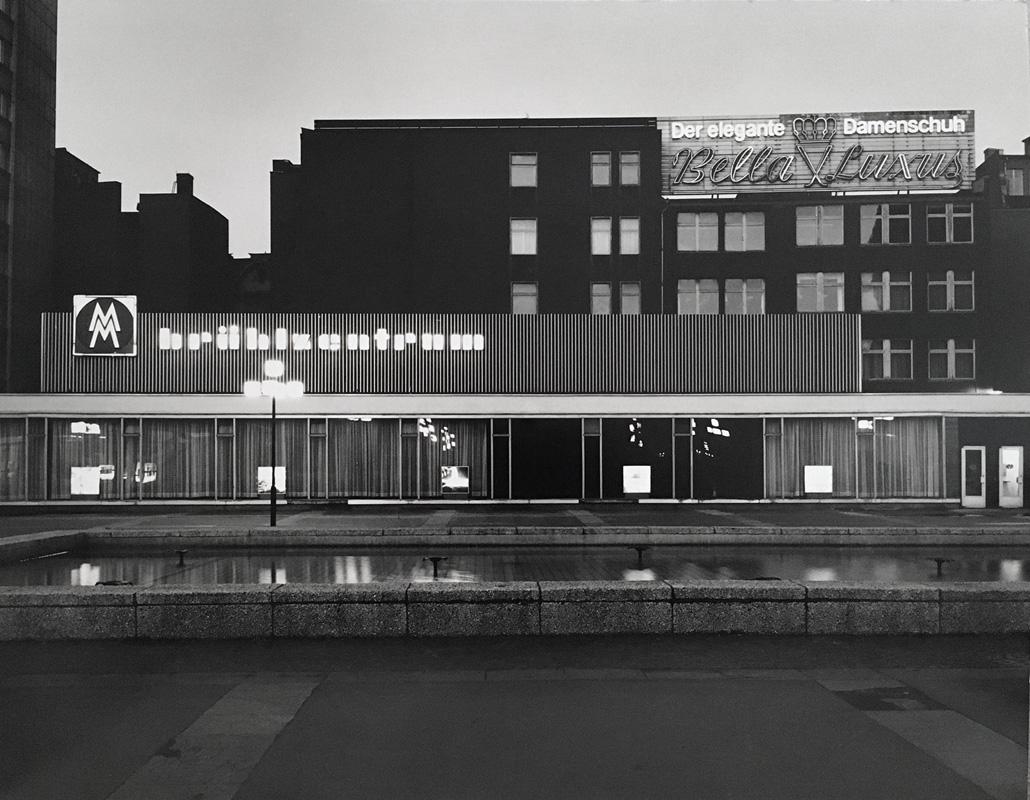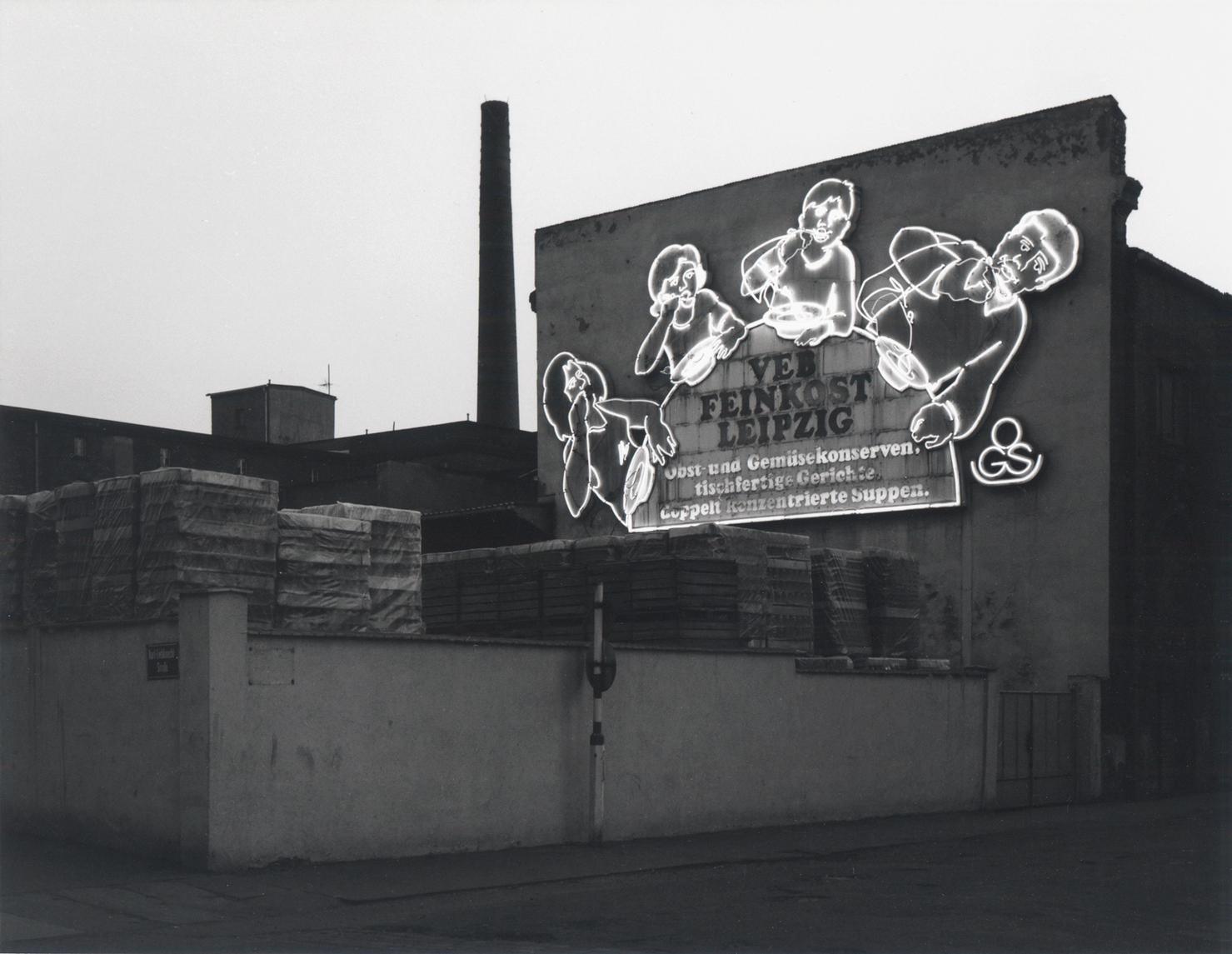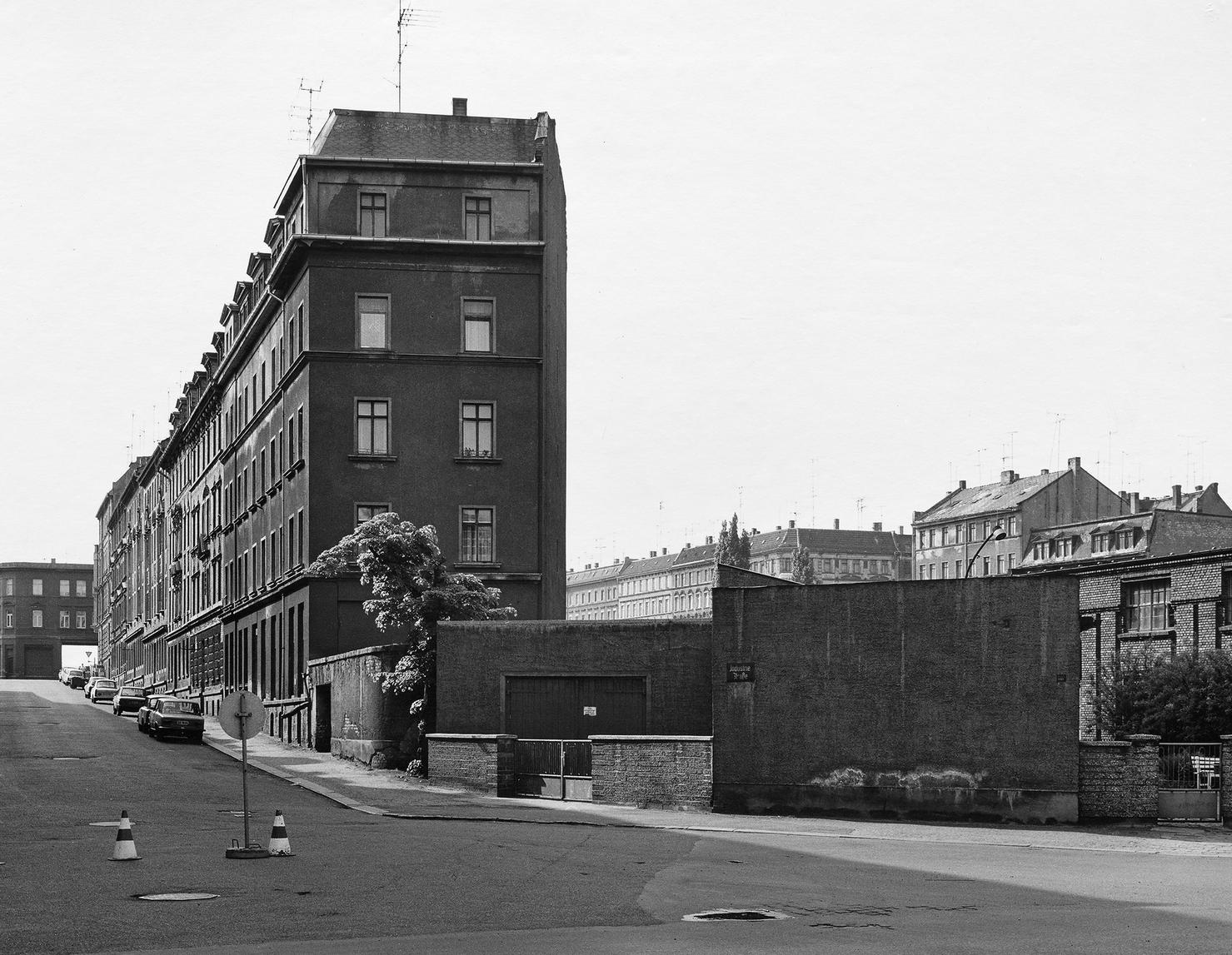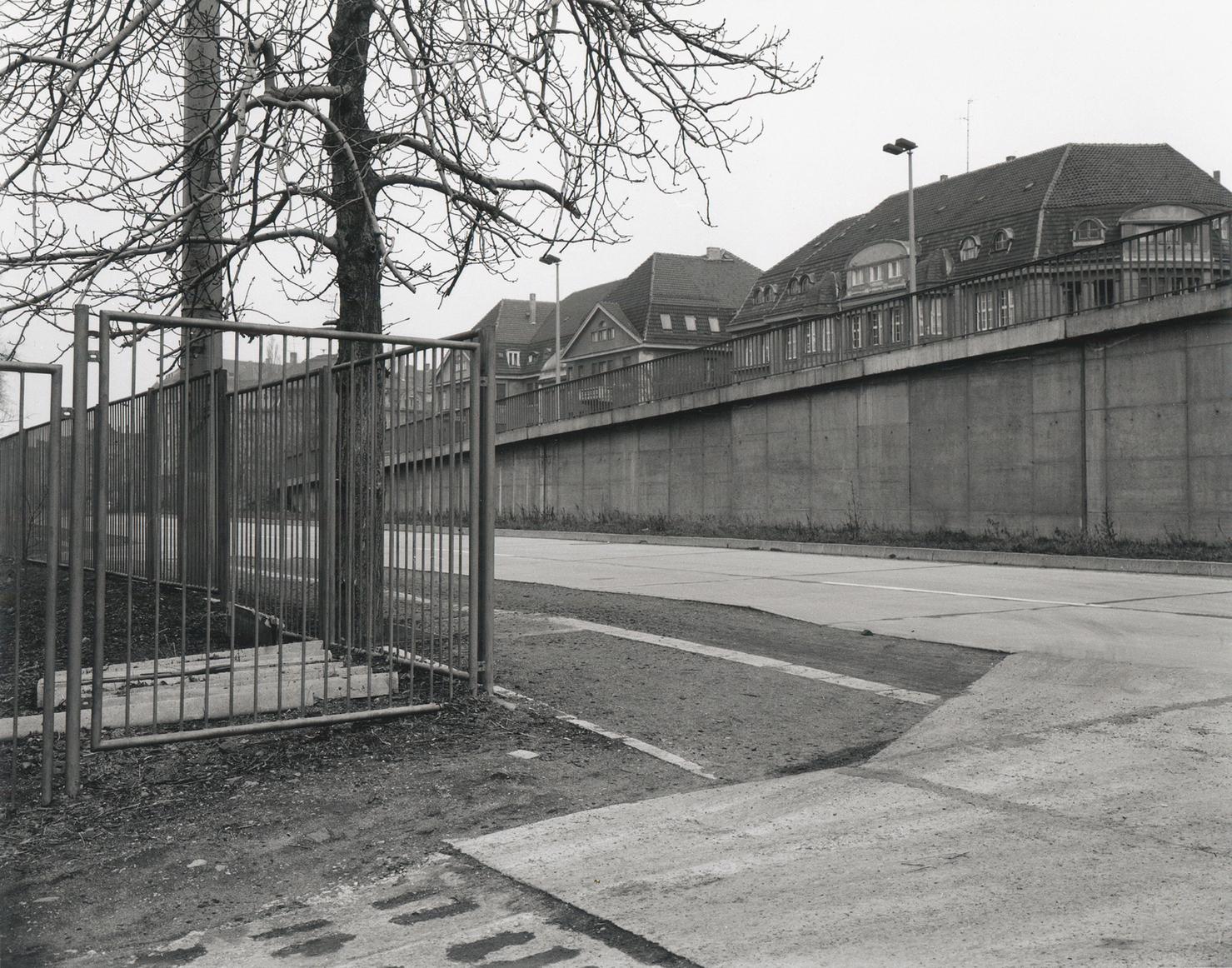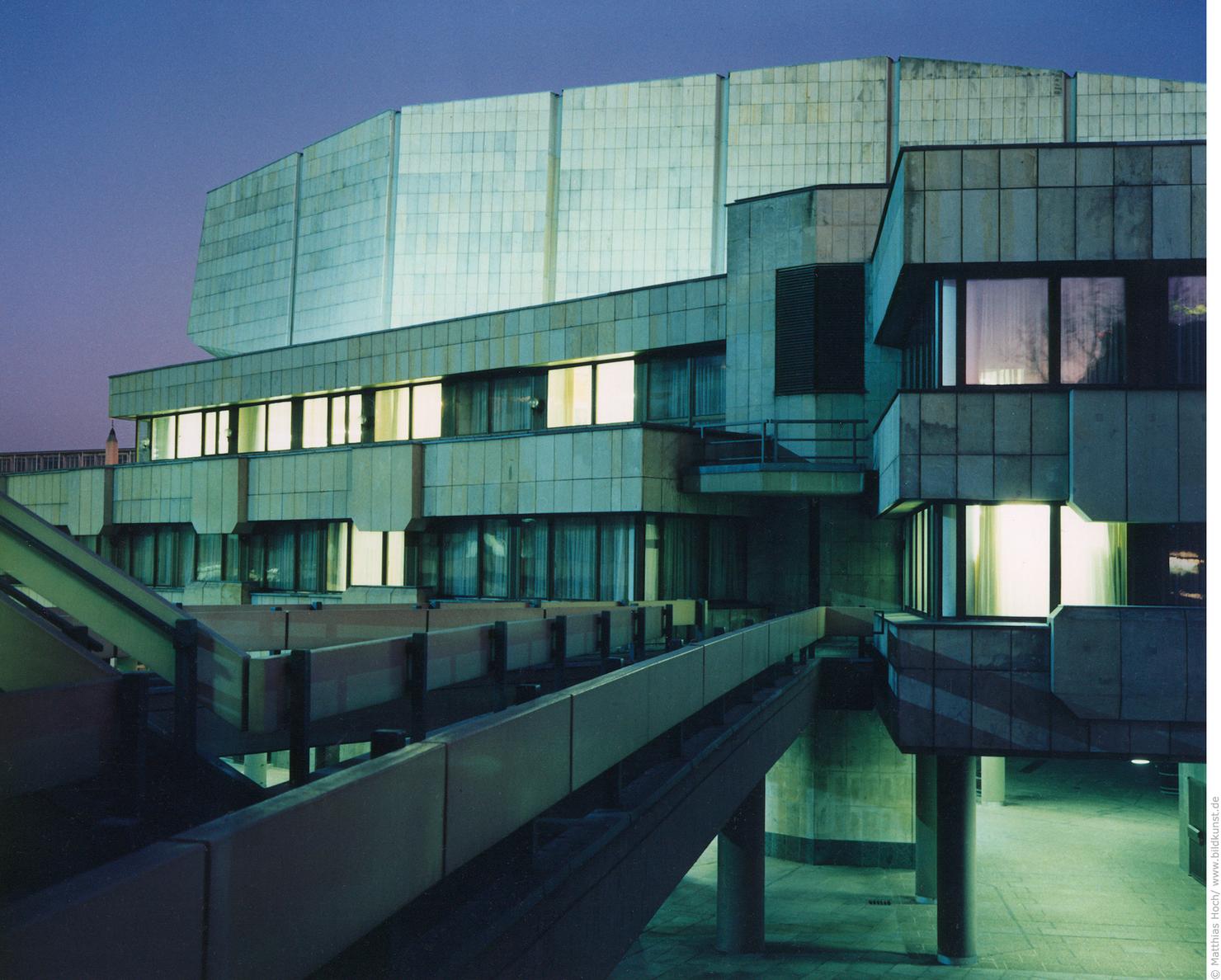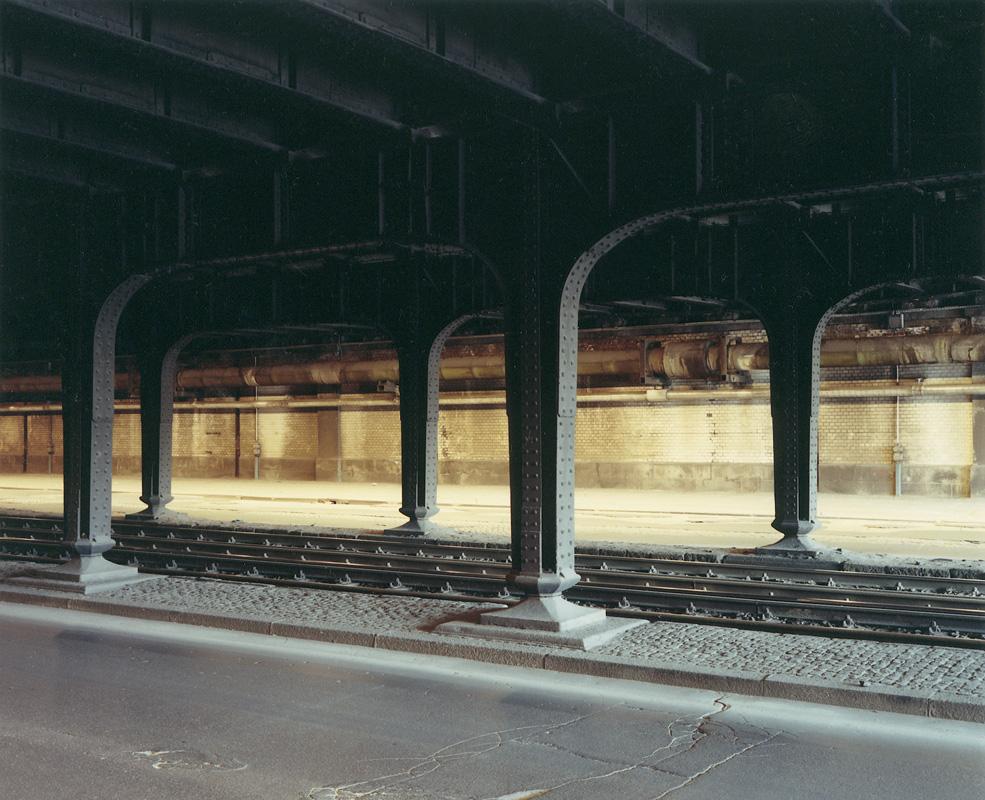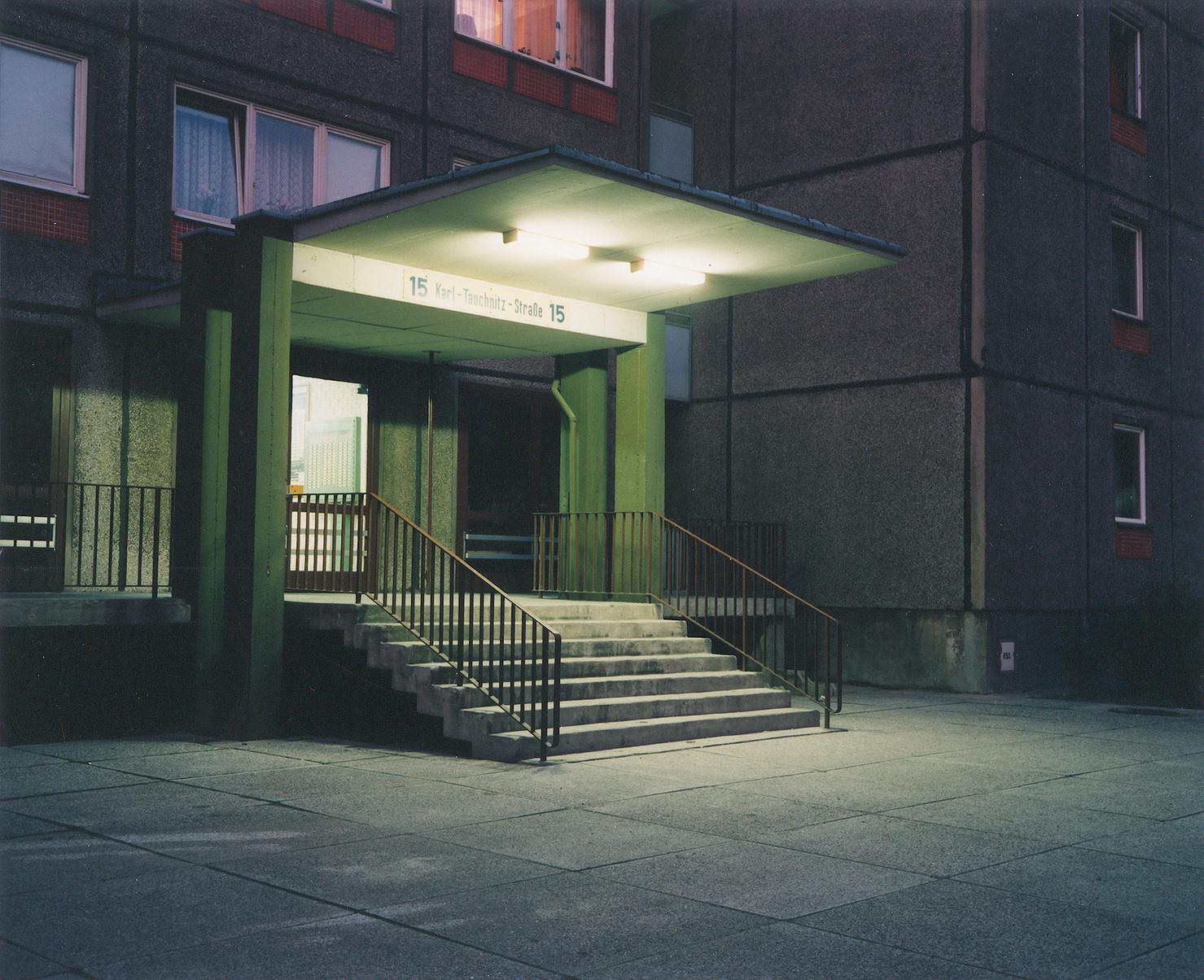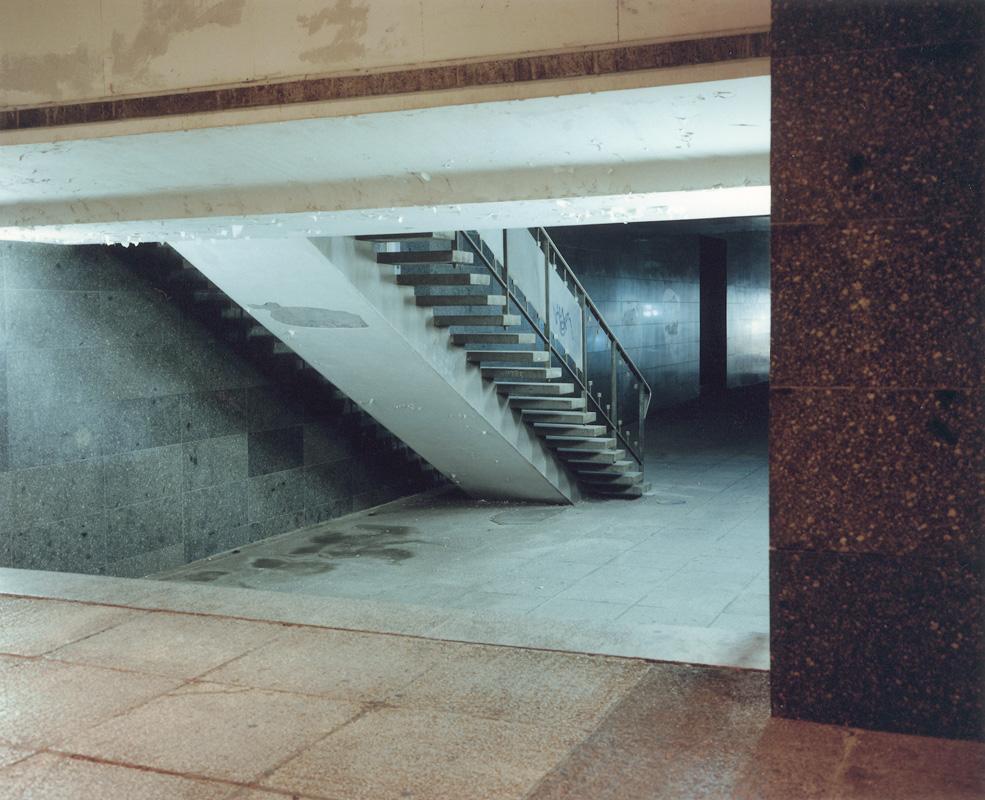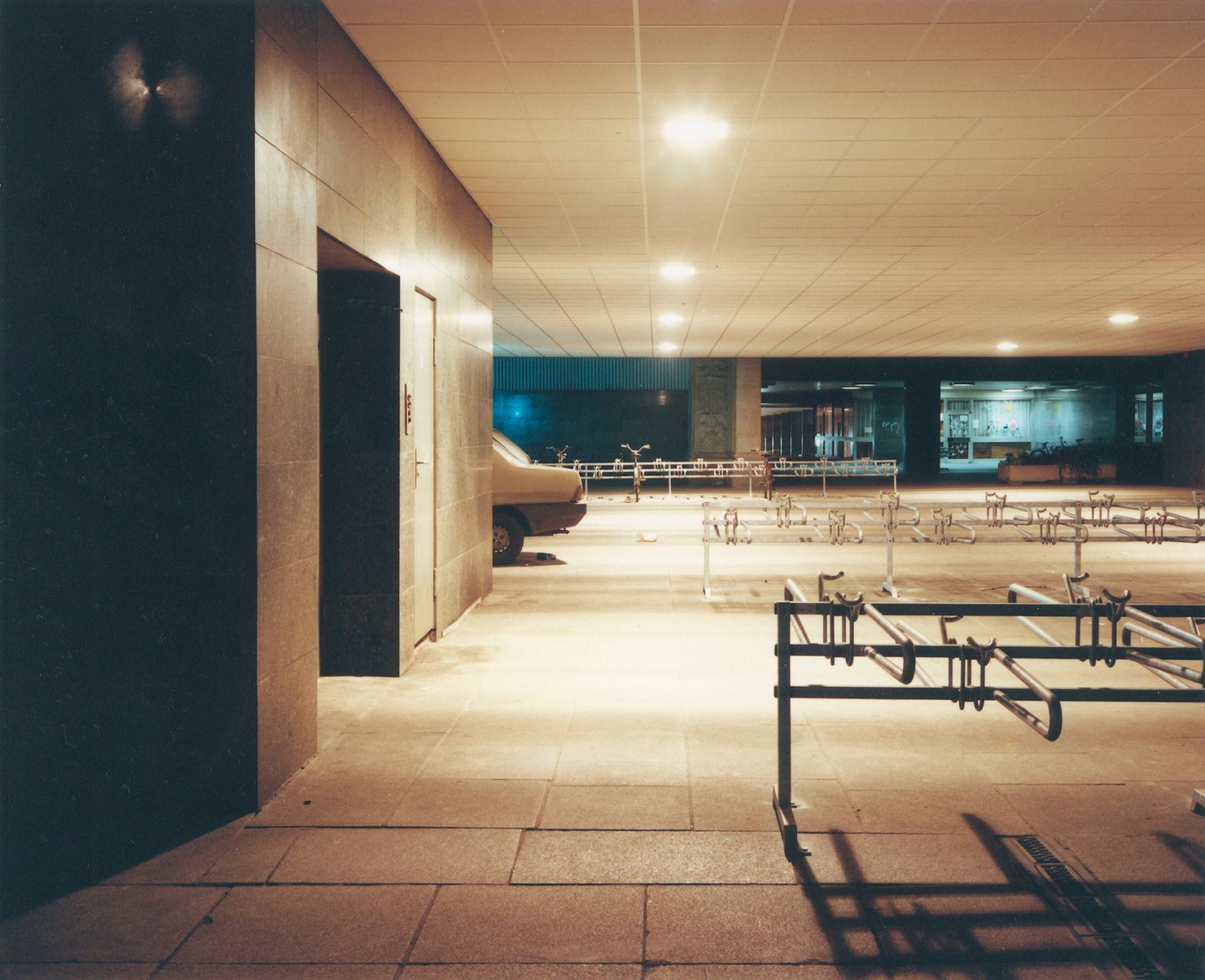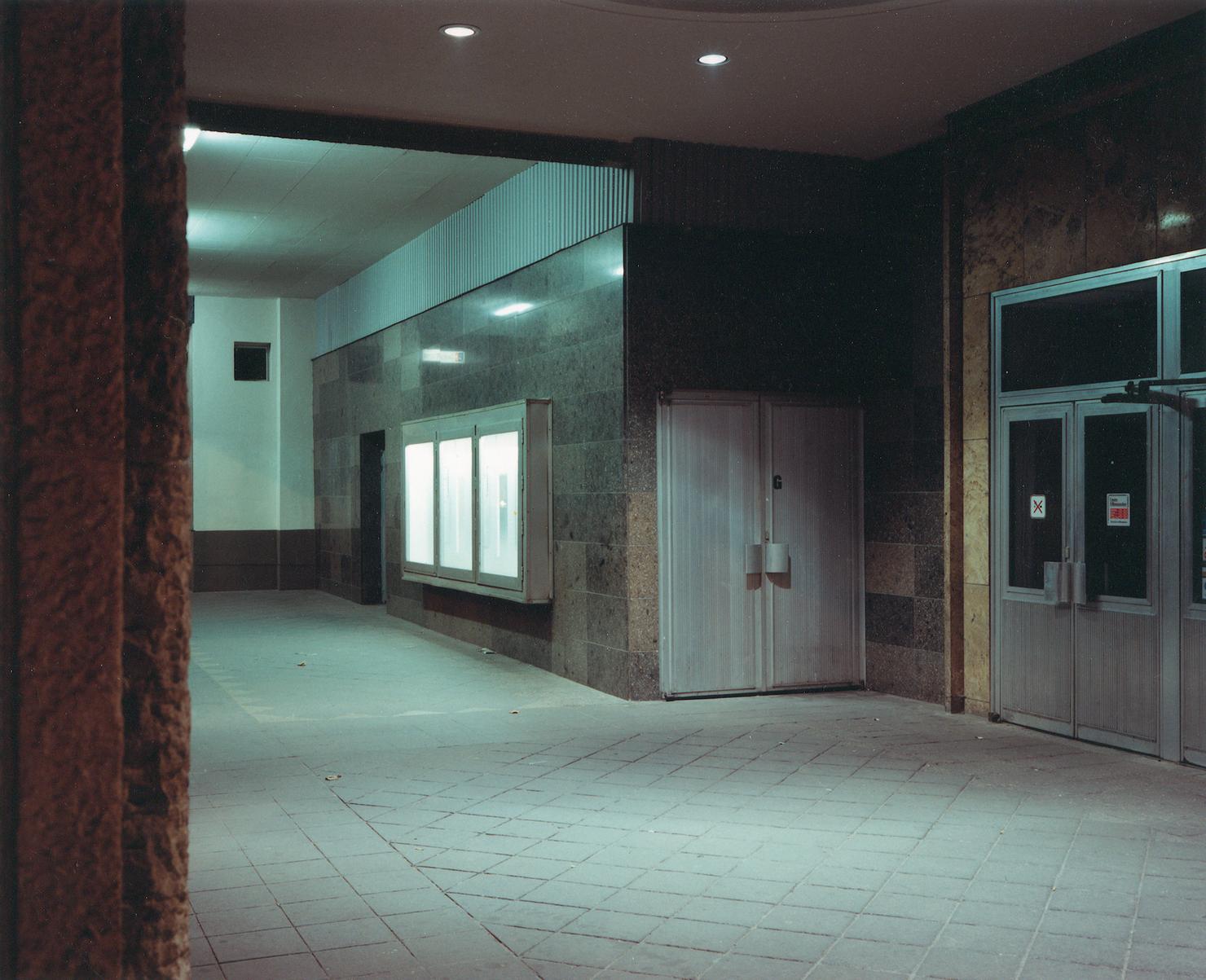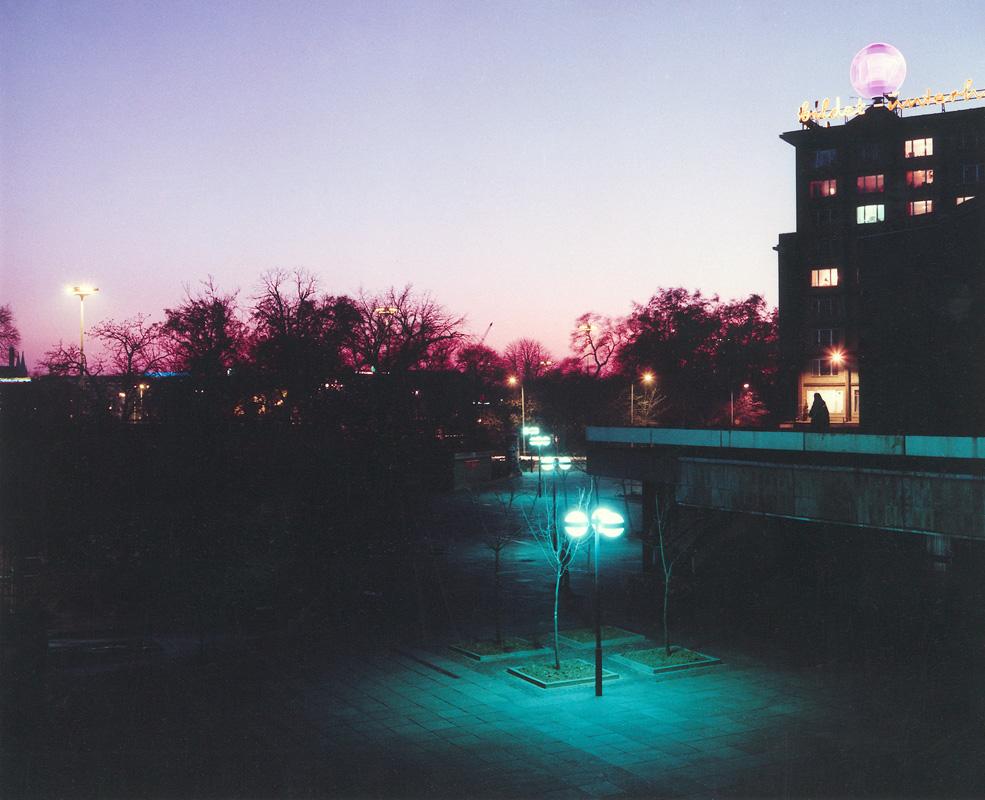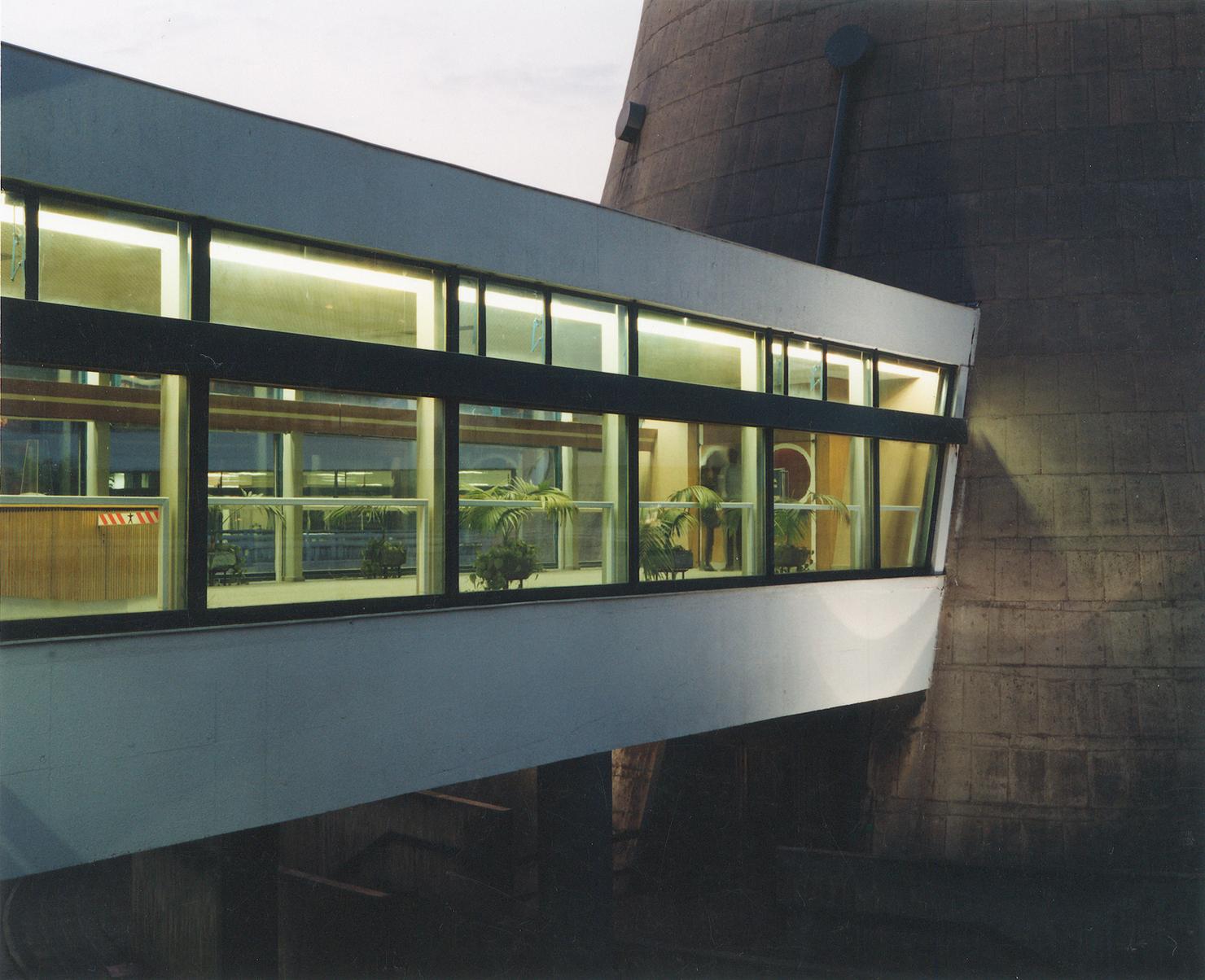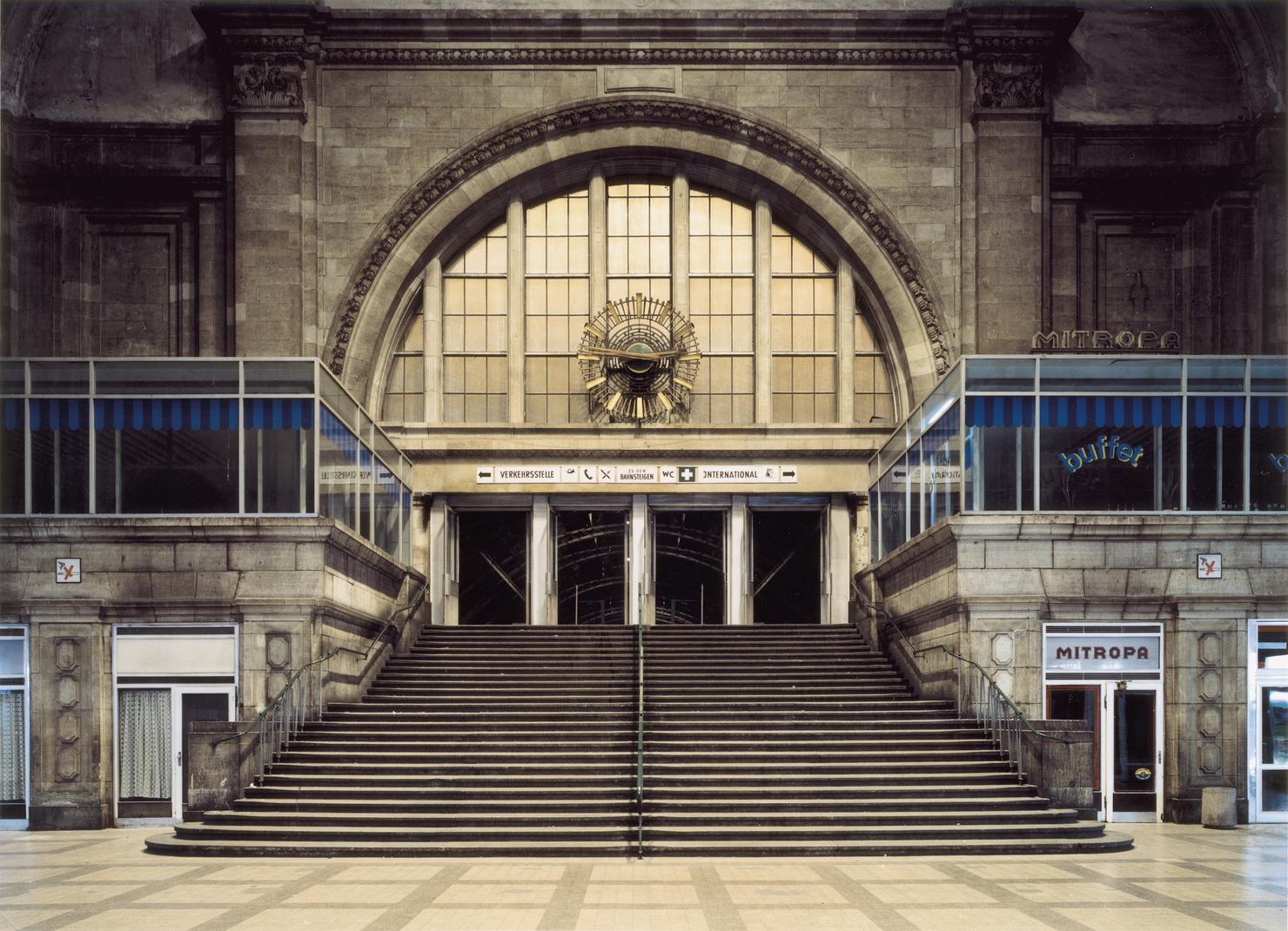Ihre Anfrage wurde erfolgreich gesendet.
Ihre E-Mail wurde erfolgreich gesendet.
Ihre Favoriten wurden erfolgreich gesendet.

Matthias Hoch | Stadt. Fotografien 1986-92 | Galerie Jochen Hempel
Stadt. Fotografien 1986-92
Stadt, 1986
„Mitte der 80er-Jahre begann ich mich für städtische Räume zu interessieren. Unspektakuläre Orte, die ich so fotografierte, dass in den Bildern möglichst wenig passierte. Ich brauchte und wollte keinen Vorwand für ein Bild: kein Ereignis, keine Sonne, keinen Schatten, keine Menschen. Das war ungeheuer spannend, und ich empfand es als subversiv, die bauliche Hülle einer Stadt zu übertragen in lesbare Zeichen, herauszulösen aus Raum und Zeit. Subjektiv war dieser Vorgang allemal, jeder hat eine andere Vorstellung von bekannten Räumen und Orten: diese hier ist meine. Die Bilder entstehen im Kopf.“ (MH, 1990)
Bereits während seines Fotografiestudiums lenkt Matthias Hoch seinen Blick auf den urbanen Raum. Allerdings nicht in der damals vorherrschenden Art einer erzählerischen, am Menschen orientierten Kleinbildfotografie. Nach der Beschäftigung mit dem Werk von Eugène Atget und Albert Renger-Patzsch entdeckt er für sich das größere Aufnahmeformat und die damit verbundene völlig andere Arbeitsweise. Diese kommt seiner konzentrierten Suche nach einer Ästhetik des Alltäglichen entgegen. Die vorwiegend schwarz-weiß fotografierte Serie zeigt Szenen einer Stadt. Die Bilder sind aus der Sicht eines Passanten aufgenommen, das Licht ist diffus, der Himmel weiß. Umso präziser zu sehen sind die Baukörper mit ihren Materialien, die kahlen Zweige und die unebenen Fahrbahnplatten.
Nacht, 1987-92
In einer von Schwarzweißfotografie geprägten Umgebung an der Leipziger Kunsthochschule Mitte der 80er-Jahre hatte es die Farbfotografie schwer. Hauptsächlich wegen der Schwierigkeit, mit unzureichenden Materialien den technischen Prozess des Entwickelns und Vergrößerns der Bilder zu beherrschen. Darüber hinaus war die Farbfotografie verpönt, sie galt als bunt, grob und banal und spiegelte nach Meinung ihrer Kritiker nicht die Realität wider. „Angeregt durch Filme wie Der amerikanische Freund (Wim Wenders, 1977) wollte ich endlich Farbe in meinen Bildern. Farbe, die ein ganz normaler Bildbestandteil sein sollte, ein Informationszusatz, kein Kitsch. Die mir die Möglichkeit eröffnete, eigentümlich dissonante oder unbunte, vergraute Farbkonstellationen auch als solche darzustellen.“ (MH, 1990)
Dies erprobte Matthias Hoch zuerst in Nacht- und Dämmerungsaufnahmen in Leipzig und Ostberlin. Künstliche Lichtquellen prägen den Charakter der Bilder, die Farbtöne changieren zwischen Blau, Grün und Purpur und verstärken die Abstraktion der Szenerie.
Stadt, 1986
"“In the mid-1980s I started taking a greater interest in urban spaces. Unspectacular places, which I photographed in such a way that as little as possible was happening in the pictures. I didn’t need or want any pretext for making a photo: no event, no sun, no shadow, no people. This was incredibly exciting for me, and I felt that it was subversive to translate the structural shell of a city into legible signs, to lift it out of space and time. This procedure was always subjective, because everyone has a different image of familiar spaces and places: this one here is mine. The pictures come about in my head.” (MH, 1990)
During his photography studies Matthias Hoch was already focusing his attention on the urban space. He did not however pursue the most popular approach at the time, using a 35mm camera to take narrative photographs of people. Instead, through his close study of the work of Eugène Atget and Albert Renger-Patzsch, he discovered the world of large-format cameras, which involved a completely different working method. This approach proved conducive to his concentrated search for an aesthetic of everyday life.
The mostly black-and-white photographs in the series show scenes in a city. The pictures are taken from the point of view of a passer-by; the light is diffuse, the sky white. These formal decisions bring out all the more precisely the material qualities of the buildings, the bare branches and the uneven road surfaces.
Nacht, 1987-92
Back in the mid-1980s at the Leipzig Art Academy, black-and-white photography was the order of the day, making it hard for color photography to assert itself. The main reason for this discrepancy was the difficulty involved in mastering the technical processes for the development and enlargement of color photographs without having the right materials at hand. And color photography was frowned upon anyway, viewed as too gaudy, coarse and banal – and in the opinion of its critics not conducive to representing reality.
“Inspired by films like The American Friend (Wim Wenders, 1977), I wanted to finally introduce color into my pictures. Color that would be a completely normal component of the image, an informative addition, not kitsch. Which opened up for me the possibility of representing peculiarly dissonant or achromatic, grayed color constellations as they really appeared.” (MH, 1990)
Matthias Hoch tested this possibility first in night and twilight photos taken in Leipzig and East Berlin. Artificial light sources shape the character of these images, with hues that shimmer between blue, green and magenta, reinforcing the abstract quality of the scenery.
Translated from the German by Jennifer Taylor.

